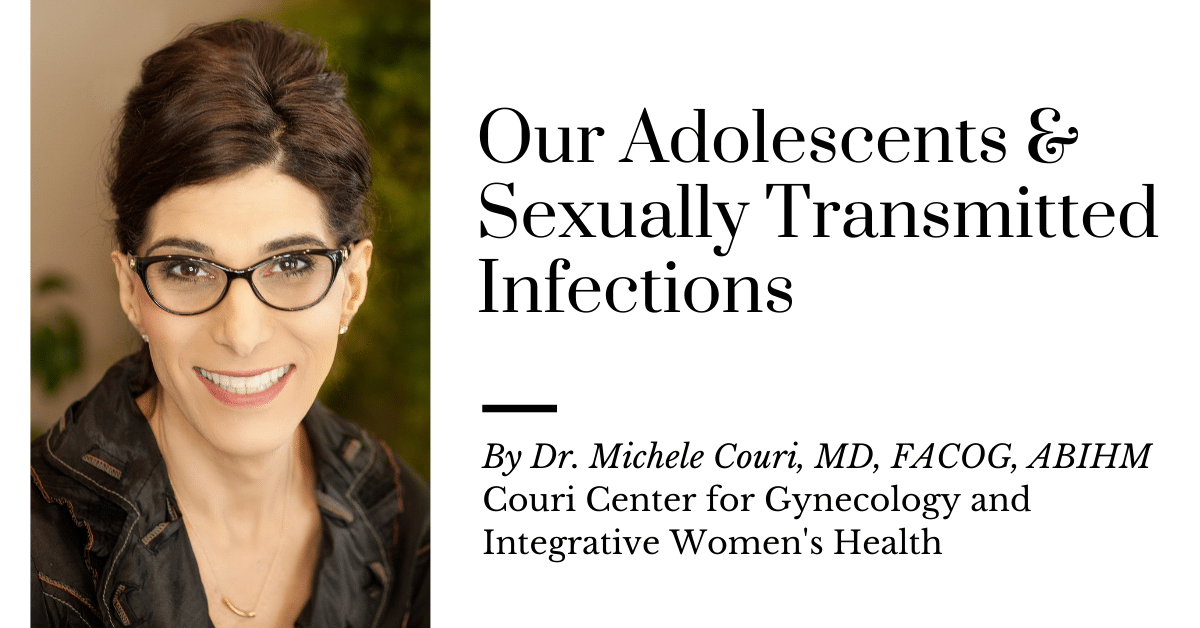
So many of us have adolescent and young adult-aged children, and I recently read an article in the Journal of the American Medical Association that very clearly addressed an issue of concern for our youth. The article focused on information from the U.S. Preventive Services Task Force (USPSTF) and reported that the rates of sexually transmitted infections (STIs) among 15-24-year-olds continue to rise significantly. The article, in particular, focused on the rates of chlamydia and gonorrhea, two of the most commonly diagnosed STIs in the United States.
According to the CDC, approximately 1.8 million cases of chlamydia and more than 600,000 cases of gonorrhea were reported in 2019. To give you some point of reference, there were 1.3 million cases of diabetes diagnosed in the U.S. in 2017. These numbers are absolutely staggering to me. Additional CDC data shows that 1 in 5 people in the U.S. has an STI totaling nearly 68 million infections. Using 2019 data, 61% of all reported chlamydia infections were among patients aged 15-24 years, and 2018 statistics show that 54% of new cases of gonorrhea were among persons of this same age range. The direct medical costs of chlamydia and gonorrhea to our health care system are profound — $1.1 billion.
STIs can have long-lasting medical consequences in addition to the toll that they can take on patients’ emotional well-being. Chlamydia and gonococcal infections in women are often asymptomatic, so, unfortunately, they can go undetected for long periods of time. If left untreated, chlamydia and gonorrhea can cause chronic pelvic pain, complex pelvic infections called pelvic inflammatory disease (PID) that can cause fallopian tube scarring and infertility. These STIs can also cause pregnancy complications as serious health problems among newborns.
Because chlamydia and gonorrhea infections in women rarely cause symptoms, screening for these infections is vital. The USPSTF recommends screening for chlamydia and gonorrhea in all sexually active women 24 years of age or younger and in women 25 years of age or older who are at an increased risk for infection (new sex partner, more than 1 sexual partner, a sex partner with concurrent partners, or a sexual partner with an STI). Screening in women can be achieved through urine testing or at the time of a pelvic exam when a vaginal or cervical swab can be obtained. Self-collected vaginal swabs are also a means for screening. How often patients need to be screened depends on the patient’s sexual patterns. A practical approach would be to screen patients yearly in addition to when the sexual history includes new or persistent risk factors since the last negative test result.
Both chlamydia and gonorrhea infections can be successfully treated with antibiotics, but the patient’s treatment alone is not enough. Treating the patient’s sexual partner(s) must also occur to reduce the risk of re-infection. Prevention of these infections is of absolute importance, and educating our youth about making wise decisions regarding their sexual health is critical. Practicing abstinence, not having vaginal, oral, or anal sex, is the most reliable way to avoid STIs. Other ways to reduce the risk of STIs include consistent and correct usage of latex condoms, practicing monogamy or limiting the number of sexual partners, making sure that you and your partner get tested before initiating any sexual activity, and making smart choices when it comes to alcohol use and avoiding drug use since both can lead to risky sexual practices.
Share this information with your young adult kids and grandkids. Empower them with knowledge. As we educate our children about STIs, I hope they never forget that respect for their bodies is the foundation upon which all “health” is built. “I cannot conceive of a greater loss than the loss of one’s self-respect.” Mahatma Gandhi
To Your Health,
Dr. Couri
Resources: JAMA. 2021 Sept 14;326(10):949-956
CDC.gov
